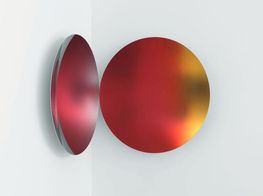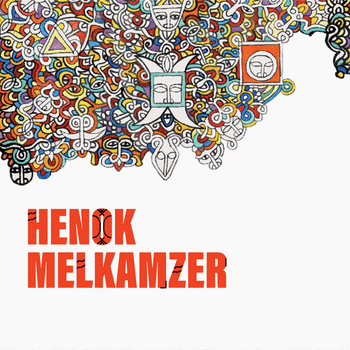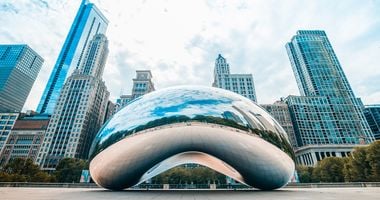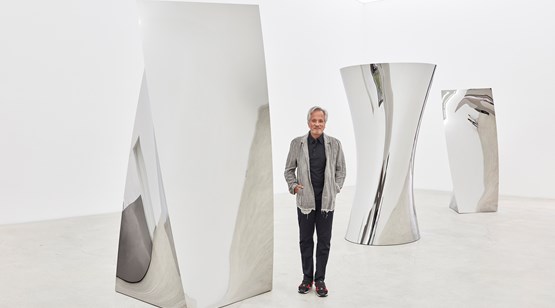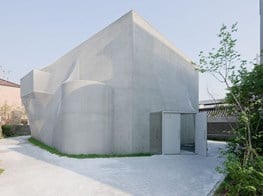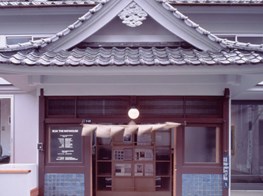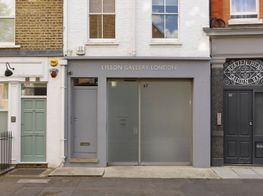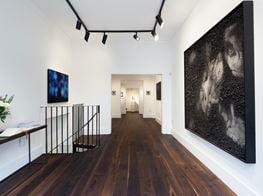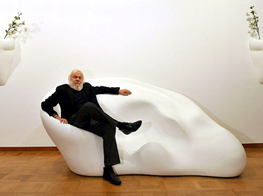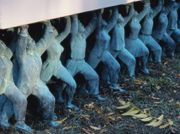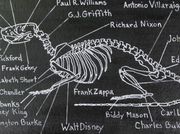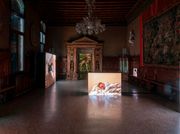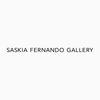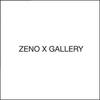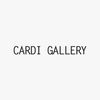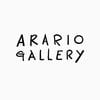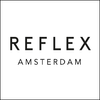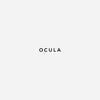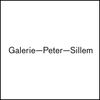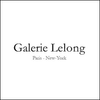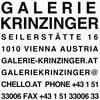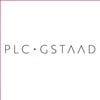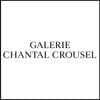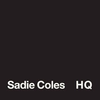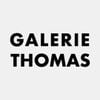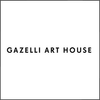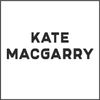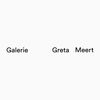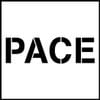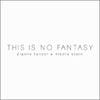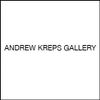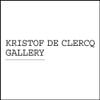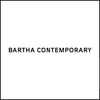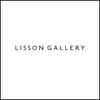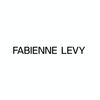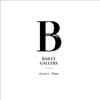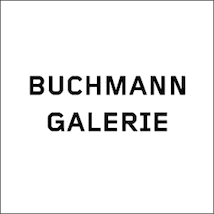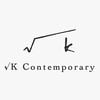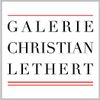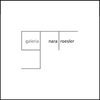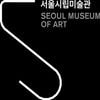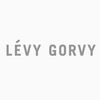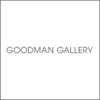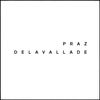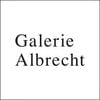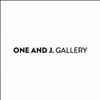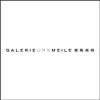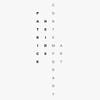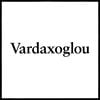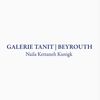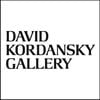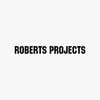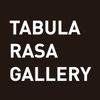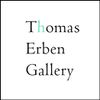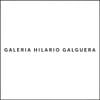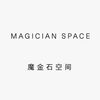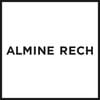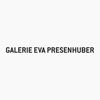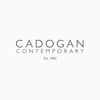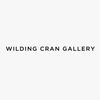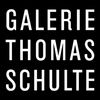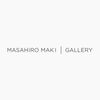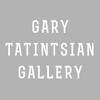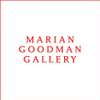Anish Kapoor
Anish Kapoor. Photo: Keith Park. Courtesy Kukje Gallery, Seoul.
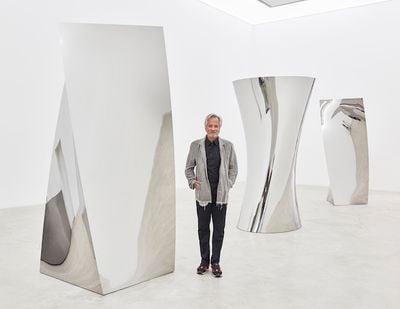
Anish Kapoor. Photo: Keith Park. Courtesy Kukje Gallery, Seoul.
Anish Kapoor's large-scale artworks are among the most recognisable on the planet. A tenacious affinity for drama, form, and curvature characterise his sculptures, which hold court in public spaces, collections, and public art institutions around the globe.
Born in Mumbai in 1954, the artist is best known for his works which use curved metal, marble, wax or stainless steel to flirt with and materialise the sublime. His sculptures explore dualities such as disappearance and being, heaven and earth, the visible and the just-out-of-sight. Kapoor makes a strong case for spectacle in art, unearthing it from the pile of conditions that critics have deemed unfashionable and dusting it off to create works with monumental presence.
Take for example his 'Sky Mirror' works: enormous concave 'dishes' made of reflective steel which are tilted upwards to reflect the sky, fashioning earthly portals to the clouds. Or Descension (2014), a perpetual whirlpool presented at the Kochi-Muziris Biennale (2014–2015). Kapoor's works are unapologetically meant to be experienced by the public at large.
Despite the often-colossal size of his works, a strong relationship to the human body is rooted deep in Kapoor's practice. He has spoken at length about his interest in the human psyche, and the orifices, apertures, caves, and tunnels present in his sculptures carry undeniably physical connotations.
The artist took heat last year after a casual remark was interpreted as identifying his funnel-shaped Dirty Corner (2015), installed at the Palace of Versailles, as the 'queen's vagina'. Jackie Wullschlager writing for The Financial Times described it perhaps more intelligently as as an 'erotic, feminised disruption to Le Nôtre's masculine rigidities and tamed harmonies of lawn and hedge'. Kapoor himself shrugged the controversy off during a recent press conference in Seoul, pointing out that the majority of monuments and sculptures are plainly phallic, yet routinely escape public outrage.
Anish Kapoor grew up in India and spent some time in Israel before moving to England in 1972 to study sculpture at Hornsey College of Art and later Chelsea School of Art (now called Chelsea College of Arts). He represented Britain in the 44th Venice Biennale in 1990, winning the Premio Duemila. The following year he won the coveted Turner Prize.
His most recognisable projects include the installation of Marsyas (2002) in the Turbine Hall at London's Tate Modern (2002–2003), the exhibition of works he presented in the gardens of the Palace of Versailles (2015), and the 110-tonne sculpture Cloud Gate (2004), which is forged of a seamless series of highly polished and reflective stainless-steel plates and installed at AT&T Plaza at Millennium Park in Chicago.
His honours are too plentiful to list in one place: six years ago, Kapoor was the first living artist to have a solo exhibition at the Royal Academy of Arts and in 2013, he was knighted for services to visual arts. Earlier this year, he was announced as a recipient of the LennonOno Grant For Peace. Kapoor made news for a different reason recently by revealing his exclusive rights to Vantablack, a substance made of carbon nanotubes and the blackest substance known on earth. Many in the artistic community were outraged at Kapoor's proprietorship of the material, which was originally developed for the aerospace and defence sectors. It remains to be seen exactly how far Kapoor will push its artistic potential.
Recent works by Kapoor are currently on view in the solo exhibition Gathering Clouds (31 August–30 October 2016) at Kukje Gallery in Seoul. The show is titled after his series of circular concave 'void' works (so recognisable in the art fair circuit) which fill one room of the gallery. This grouping of works are painted with a flat shade of dark grey, resulting in an illusion of oscillating flatness and curvature.
Also on view are works from Kapoor's 'Non Object' series, which are, in the artist's words, based on a 'simple, stupid idea'. Larger-than-life mirrored prisms have been 'twisted' 90 degrees on their axes to become curving, mysterious forms in which reflections of the gallery space and its inhabitants seem to constantly shift. A series of smaller versions of these works are also included in the show. Ocula spoke with Kapoor over lunch on the occasion of the show's opening in Seoul.
EAWhen I first viewed the reflective 'Non Object' works in the exhibition, I found the experience similar to that of performing theatre or dance: one circles around the pieces, sometimes repeatedly, interacting with and sizing them up. One's reflection even seems to jump from place to place as it moves over the curves of the work in a way that is almost cinematic. I thought that was rather interesting given the fact that you just designed the set for the English National Opera's production of Tristan and Isolde. Can you tell me about the presence of theatricality in your work?
AKI'm quite interested in theatricality. In the art world in which I grew up, in the 70s, the theatrical was always seen as horrific. You'd never do anything theatrical now. Sculpture must be real!
I'm not sure that's ever been true. There is something about the performative in a work, where the work almost switches itself on as you enter its space. I think it's terribly important because that's a conversation between a viewer and an object. You're asked to enter its space. Sculpture and the body are like this [gestures to imply closeness].
EAWhen I stood in front of the circular concave 'void' works—and I had never experienced this before though I've seen iterations of them many times—and spoke directly in front of it, it was as if someone had turned the volume on a radio up. My voice became suddenly amplified. It was rather magical. I wonder if that kind of poetic or surprising experience is something that you pursue when you make a work.
AKI've worked a lot with concavity over many, many years. And it's one of the things about concave forms and concave space that it almost always has a focus. Just as it focuses light, it focuses sound.
EAOn the subject of voids, Vantablack is often described as 'blacker than a black hole', a phenomenon that absorbs light by sucking all matter into a concentrated space. Is that cosmic comparison something that you think about often when you work with the material?
AKI'm deeply interested in the cosmic.
EAMe too.
AKI was reading somewhere today that almost all religious places have a meteorite at their heart. For example, the most famous of them is obviously the Kaaba in Mecca; there's a meteorite at the centre of that. Almost all great cathedrals, at sometime, had a meteorite. A bit of heavenly matter. The Australian Aborigines even believed that the sky was made of stone. So it's quite common, this idea that somehow there's something cosmic about our psychic material, manner, whatever you want to say. It's not dissimilar from the space you hold in yourself, it's vast, dark and it's cosmic.
EAYou grew up in India and spent your adolescence in a kibbutz in Israel, and now you live in England. Those cultures all place very different importance on monuments, sacredness and beauty. How did they influence your sense of beauty?
AKI recently went back to the small town that I grew up in northern India. I've always known, but I never realised the extent of it, that it's a valley. The Himalayas are almost all the way around it; they're huge objects, huge. I mean, the Himalayas are high. And I thought to myself, actually you know what, this has something to do with it. It's as stupid and direct as that.
EAI read an interview in which you said, at the time you grew up there it was a very beautiful place—with emphasis on 'at the time'.
AKYes. It still is, actually. —[O]

